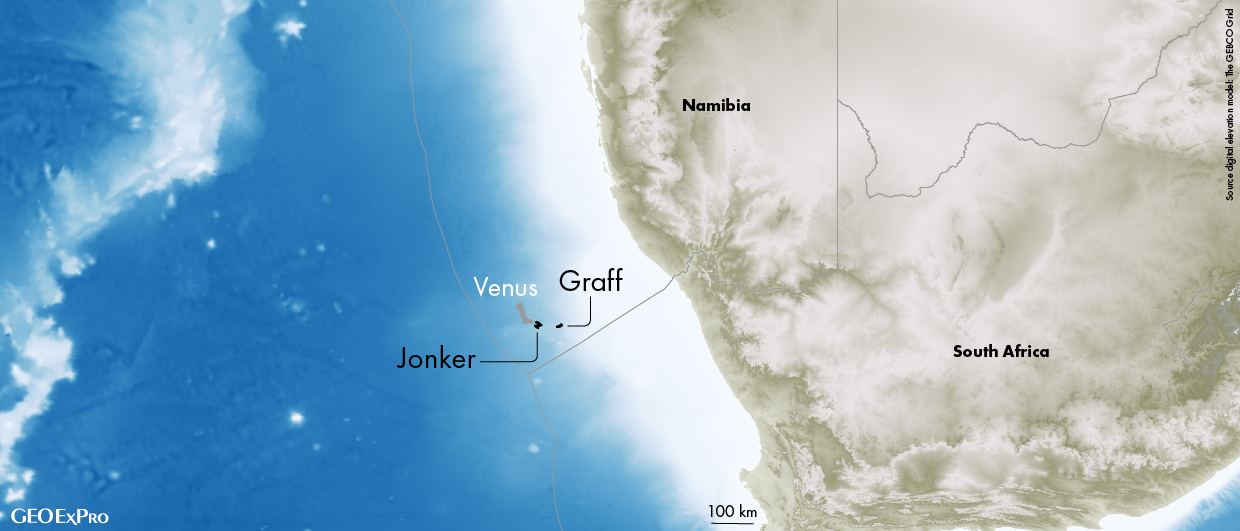“A few years ago, in the course of my work on oil reserves estimation in North Africa, I noticed that there was a discrepancy between remaining proven oil reserves figures given by OPEC and those given as likely by the geologists working in those countries.”
Danny Clark-Lowes of Nubian Consulting is a well-respected geologist with more than 30 years experience in the oil industry, who has made a career consulting on Libya. “Having a background in Libyan geology, I decided to look at the figures a bit more closely. It proved very revealing,” he says.
“Most colleagues are aware of the discrepancy, but for various reasons don’t want to pursue it. Looking back to my days as a company geologist, I remember that we quite often predicted the discovery of billion barrel oil fields,” he says. “However, over the last decade or so only 2 or 3 billion barrels oil fields were found around the world each year on average, so there is a clear mismatch between predicted and actual discoveries. I began to detect a trend – not only was less oil being found than expected, but estimates given for fields were often seriously exaggerated. So I began reading around the subject”.
Reserves trebled in a year
 “When we look at reserves figures reported by Middle East OPEC countries in the 1980s, we see an interesting jump in the reported total – sometimes doubling or even trebling the figures from one year to the next,” Danny continues. “Kuwait, for example, reported reserves of 64 – 66 billion barrels of oil (Bbo) in the years up to 1984; in 1985 this figure doubled to 90 Bbo. Similarly, Abu Dhabi’s reported reserves were in the region of 30 Bbo until 1988, when the figure trebled to over 90 Bbo, while Saudi Arabia’s reported reserves increased from 170 Bbo in 1989 to 258 Bbo in 1990.”
“When we look at reserves figures reported by Middle East OPEC countries in the 1980s, we see an interesting jump in the reported total – sometimes doubling or even trebling the figures from one year to the next,” Danny continues. “Kuwait, for example, reported reserves of 64 – 66 billion barrels of oil (Bbo) in the years up to 1984; in 1985 this figure doubled to 90 Bbo. Similarly, Abu Dhabi’s reported reserves were in the region of 30 Bbo until 1988, when the figure trebled to over 90 Bbo, while Saudi Arabia’s reported reserves increased from 170 Bbo in 1989 to 258 Bbo in 1990.”
“Obviously, this could not be explained entirely by technological advances in finding oil. It had much more to do with the introduction by OPEC in the 1980’s of oil quotas based, in part, on reserves.”
As we are all aware, Danny is not the first person to question received wisdom on remaining oil reserves figures. Organisations like the Society for the Study of Peak Oil undertake research on the issue and seek to raise awareness of what they see as the likely disastrous consequences of global oil production peaking and going into decline. Danny is keen to raise awareness of the issues involved in over-high predictions of remaining reserves, but seeks to avoid apocalyptic predictions, believing rather that declining oil production will benefit the environment and can, with sufficient political will, be turned to advantage.
“I believe that rises in prices and market forces will actually control supply and demand of oil,” he explains, “ but it is important that we look ahead and manage our remaining resources sensibly. The important implication of these inflated reserves figures is that politicians are making decisions based on incorrect information, and I want to ensure that the Government has the right figures.
The sudden jump in reserves figures reported by OPEC countries coincide with the introduction of OPEC quotas.
Independent, impartial advice?
The UK Department of Trade and Industry quotes the BP Annual Statistical Review for global oil reserves figures, and feels justified in believing these because most other institutes and organisations reporting on reserves, such as the International Energy Agency (IEA), quote comparable figures. “All these organisations, however, either quote OPEC reserves numbers uncritically or they quote sources which in turn are quoting OPEC numbers, so these ‘independent’ sources are not as independent as it would appear,” says Danny.
“The UK government is quite happy to use figures from BP, but BP is a commercial company, so why should its information be impartial? I publicly challenged BP at a conference last year, asking how it could justify using OPEC figures in the Statistical Review, and the company, quite reasonably, replied that it had commercially sensitive reserve figures for in-house use, but relied on reserves estimates in the public realm for publication. This is stated in the Review, but does the Government realise the implications?”
Why does it matter?
“Governments, institutes and the media debate and legislate on energy policy based on figures from the petroleum community. We should be providing our government with independent, credible and scientifically based data, but it is being misinformed.”
“For example, Government needs to understand that growth in world oil production (which currently stands at about 84 MMbopd, or 30 Bbo per annum) at the historical average rate of 2% per annum up to 120 MMbopd is unrealistic, with many informed commentators considering that, even with unconventional oil supplies coming on stream, it is unlikely to reach as high as 105 MMbopd.”
“The economic consequences of making decisions based on unlikely predictions is far reaching and serious,” he continues. “Almost every decision Government has to make, on topics ranging from transport infrastructure to house design, is based on assumptions about availability of hydrocarbons, yet these decisions are often based on unreliable data. Not just energy supply, but important security and environmental issues are inextricably linked to the accuracy of oil reserves estimates.”
Danny first started publicising his thoughts on the implications of over-inflated reserves figures a year or so ago and has noticed that the climate of thought is changing rapidly, as politicians begin to take more note of ‘green’ issues. “Interestingly, decisions which I expected to be the result of worries about availability of energy supplies are actually being driven by environmental and security issues. My purpose in highlighting the reserves issues has been to raise awareness at all levels, and I am happy that this is now happening.”
“It took million of years for geological processes to create our conventional oil and we have used up nearly half of it in a mere 250 years, geologically in the blink of an eye. Entirely hypothetical though it is, were the rates at which we discover and consume oil at present to stay steady then it would all be gone in 45 years time. We won’t get a second chance to exploit this invaluable resource,” Danny Clark-Lowes says.
Analysing Libya’s figures
The OPEC quoted remaining proven oil reserves for Libya are 39.1 BBo, which gives the country 40% of Africa’s oil reserves and 3% of the world total, although some senior Libyan geologists have openly quoted a much lower figure of 24 Bbo.
“Despite asking questions aimed at finding a technical justification for the 39 Bbo figure at conferences and meetings, none has been forthcoming,” Danny Clark-Lowes says. “However, it has been suggested that the lower figure is based upon a conventional recovery factor (ratio of recoverable reserves to oil-in-place for a given field), in the region of 30%, whilst the higher figure is justified by improved recovery techniques, including secondary and tertiary recovery.”
“The figure of 39 Bbo represents reserves to be produced from fields currently on production and from discovered fields yet to be brought on production. If we assume that current producing fields are declining at a rate of 6% a year (an optimistic assumption), then by the year 2075, 9.5 Bbo would have been produced,” Danny reasons. “The balance of just under 30 Bbo would then have to be produced from the undeveloped fields – but this would require the impossible recovery factor of 98%. Alternatively, if we apply a realistic recovery factor of 32% to the undeveloped fields, then the producing fields would have to decline at the highly unlikely rate of just 1% to produce enough oil by 2075 to support the 39 Bbo figure.”
In short, Danny demonstrates that there can be no plausible technical justification for the 39 Bbo figure. “The figures just don’t add up.”
Based on provisional estimates, including a generous oil-in-place assumption,conventional recovery factors and reliable production data to 2005, Danny and his colleagues in Nubian Consulting estimate that the remaining discovered reserves in Libya are in the order of 19 to 22 Bbo, roughly 70% from producing reservoirs and 30% in undeveloped and shut-in fields and reservoirs. Similarly, their estimate of ultimately recoverable reserve (URR) for Libya is around 50 Bbo. Yet the Libyan Government have been quoted as claiming that the country has as much as 138 Bbo URR.
“The relentless rise in reserves with time, despite production, is attributed to improved recovery factors,” says Danny. “I believe the numbers have a strong whiff of the political.”





